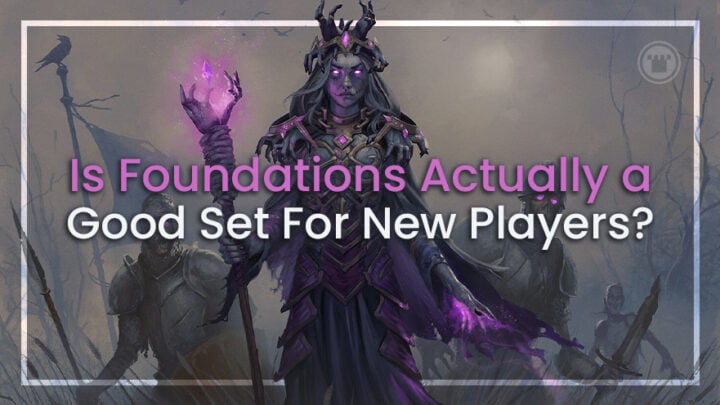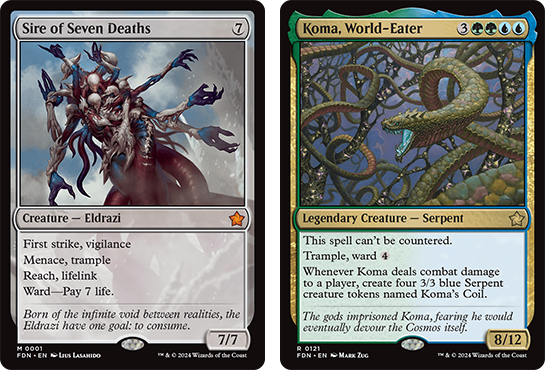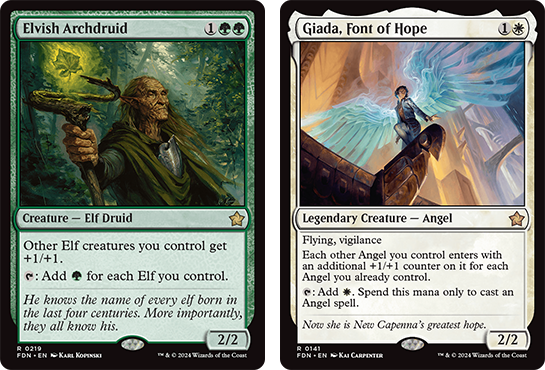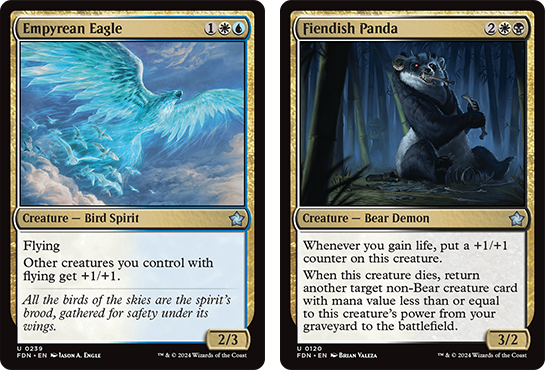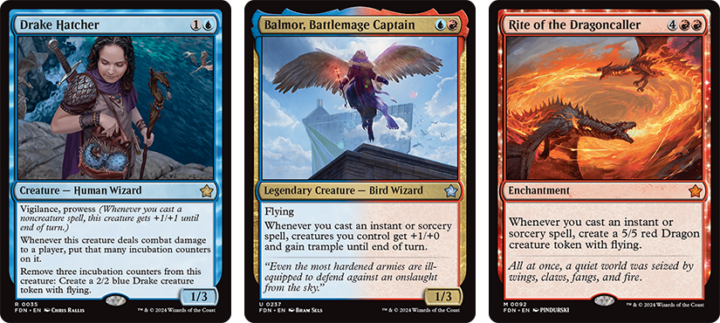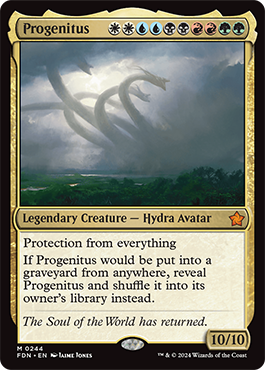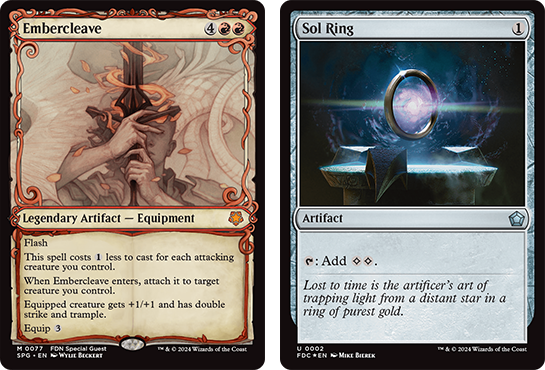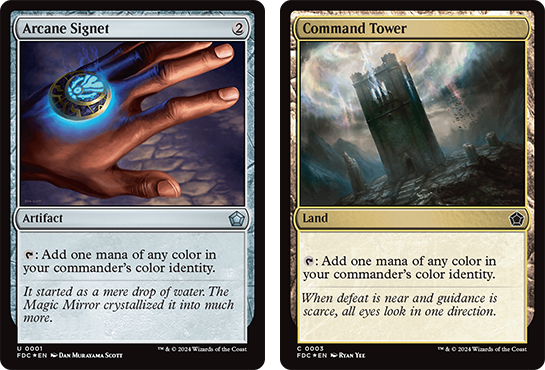A few weeks ago I wrote about Foundations and the history of core sets more broadly. There, I discussed the fact that they are intended to be beginner products that help introduce new players to the Standard format, especially. This is often achieved by more simplified designs that help introduce players to the game’s basic mechanics and themes.
For the most part, Foundations is successful in achieving this goal. However, there are a few choices they made that don’t exactly align with the idea that this set is supposed to introduce players to Magic. In this article, I’m going to discuss where I think they went right, and where I think they went wrong.
Let’s start with a look at the aspects of the format that make it a good set for beginners.
THE SIMPLIFIED DESIGNS ARE WELL-EXECUTED
Of late, Magic cards have gotten increasingly wordy and effects and have become more and more complex. This set is much simpler than other releases, especially in comparison to the last few years. Overall, I think Magic design has arguably gotten too complex, so I was a little bit worried they would have a hard time dialing that back. But they did. In fact, they exceeded my expectations.
It’s commonly thought that “simple” cards have to be bad, but that really isn’t true. I think the most successful designs in Foundations are the ones that are really cool, powerful cards, but they are still very easy for a new player to understand.
Sire of Seven Death and Koma, World-Eater are perhaps the best examples of this. Both of them are Limited bombs and have tons of potential in 60-card and 100-card formats too. But they are both very basic cards.
The Sire is a great introduction to the Eldrazi, and is certainly the kind of card that any new player will be impressed by. But its text box also just consists of a bunch of evergreen keywords. If they don’t know what any of them it can certainly be daunting, but chances are good that they’ll know what most of them are because they are on several other cards in the set.
Meanwhile, Koma has an eye-popping stat-line, a couple of evergreen keywords, and a “combat damage to opponent” trigger. Even though it’s expensive, there is little about Koma that would be challenging for a new player to understand.
THE TYPAL PAYOFFS ARE GREAT
Since the very beginning, core sets have included typal payoffs. So I’m happy that they included several of them here. Not just because it’s tradition, either.
Typal payoffs are some of the simplest synergies for a new player to understand. It really introduces the idea of synergy to new players in general in a very obvious and easy to digest way. If you open up an Elvish Archdruid for example, it’s very obvious that you want to jam a bunch of Elves into your deck.
Even though they are simple, enfranchised players really love typal decks too. The synergies might be simple, but they are often quite powerful and fun to play with.
THEY CHOSE STRAIGHTFORWARD BUT ICONIC THEMES FOR EACH COLOR PAIR
One of the most defining aspects of Magic is the color pie. Ideally, a core set introduces players to what makes each color and/or color pair unique. So I think it’s great that they chose very classic designs for each of the color pairs. If you’re an experienced player each of them is probably the first theme you think of when you think of that color pair.
UW: Skies
UB: Graveyard
BR: Aggro
RG: 4+ Power
GW: +1/+1 Counters
BW: Life gain
UR: Spells
BG: Morbid
RW: Aggro
UG: Ramp
Each and every one of them is very easy for a new player to understand, while also conveying the flavor and mechanical themes of each color pair. This means experienced Limited players can still draft synergistic decks, while newer players won’t have a hard time at all realizing they should jam a bunch of fliers into their UW deck, or a bunch of life gain cards in BW.
However, as much as I like the choices they made with each of these archetypes, they did make one mistake when crafting one of them. And it serves as a good segue into the few things about the set that aren’t good for newer players.
THE SPELL PAYOFFS ARE INCONSISTENT
As I noted above, they chose iconic roles for each of the color pairs in the set. Deciding to go with a “spells matter” theme for Blue-Red makes a ton of sense. However, the way they actually executed the Blue-Red color pair is not beginner friendly.
This is because there are several cards in the set that key in on “instant or sorcery spells,” while others are interested in the more broad category of “noncreature spells.” For example, Balmor is the signpost Uncommon for the entire color pair while Prowess is also heavily featured in the set.
This is something that it’s even possible for more experienced players to overlook. So it will undoubtedly cause lots of problems for new players, who assemble or draft a “spells matter” deck in Foundations, only to realize that while Drake Hatcher gets a buff from Rite of the Dragoncaller entering the battlefield, Balmor does not give +1/+0 and trample to all of your creatures.
They should have gone with either the “noncreature spells matter” or “instants and sorcery spells matter” theme, instead of mixing in cards that check for one or the other.
WHAT IS PROGENITUS DOING HERE?
I have mixed feelings about this massive Hydra Avatar. I think it’s great at showing players how powerful some of Magic’s biggest creatures are. I don’t imagine there are very many new players who can open Progenitus without thinking “Wow! That’s so cool!”
But after they read the first sentence in the text box, they are going to be incredibly confused. This is because Progenitus is the only card in Foundations with Protection and there isn’t any reminder text to clue a player in as to what that actually means.
It doesn’t help that Protection is incredibly convoluted and unintuitive, either. New players often make the very reasonable assumption that it means the creature can’t be destroyed by anything it has protection from. But that’s not true. Protection prevents a creature from being damaged, enchanted, targeted, or blocked by permanents or spells with that quality.
In other words, among cards in Foundations itself, there are still plenty of ways to kill Progenitus – like Day of Judgment and Blasphemous Edict. That hardly sounds like “Protection from everything” to me! If they wanted to put protection in the set, they should have included reminder text, like they did on other cards in the set with keyword abilities. And if the argument is that the reminder text is far too long to put on the card, the mechanic probably shouldn’t be included at all.
WAIT…THIS ISN’T LEGAL IN STANDARD?
One of the stated goals of Foundations is to serve as a base set for Standard for the next several years. That should mean that any card you get out of a product that says “Foundations” on it should be legal in Standard. That way, you prevent any sort of confusion. And while that is largely true, there are some Foundations cards that aren’t legal in the format. This will undoubtedly lead to some players showing up for FNM with a deck that uses cards that aren’t actually legal in Standard.
First, there’s the Special Guests. None of them are legal in Standard. The good news is that they are incredibly rare and only show up in Play Boosters, so this won’t come up all that often. However, I do wish they had made the Foundations Special Guests cards that are legal in Standard to prevent this confusion altogether.
That type of reprint might have been less exciting for other players, but there are plenty of cards in Standard right now that have quickly established themselves in Commander and in multiple 60-card formats. If you reprint the right ones, the enfranchised players will still be just as excited. Everyone would be pretty happy with a reprint of Terror of the Peaks, Caustic Bronco, or Vaultborn Tyrant.
In addition to the Special Guests, there are also three cards in the Foundations Starter Collection that aren’t legal in Standard – Sol Ring, Arcane Signet, and Command Tower. While the latter two are clearly for Commander, the same can’t be said for Sol Ring.
These three cards are essential for Commander players to be sure so I can understand wanting to include them, but it isn’t like those cards aren’t in plentiful supply at this point. It certainly isn’t worth confusing new players who might think Sol Ring is perfectly acceptable for them to play in Standard, like virtually every other card in the collection.
END STEP
Overall, Foundations is a good product for beginners. They may have made a few choices that are likely to trip up new players, but it’s acceptable to have a few of those. In fact, a player missing the difference between the different types of spell triggers, or having to have Progenitus explained to them can be a good learning experience.
What do you think? Is Foundations a good set for beginners? Let me know your take over on X!

Jacob has been playing Magic for the better part of 24 years, and he especially loves playing Magic’s Limited formats. He also holds a PhD in history from the University of Oklahoma. In 2015, he started his YouTube channel, “Nizzahon Magic,” where he combines his interests with many videos covering Magic’s competitive history. When he’s not playing Magic or making Magic content, he can be found teaching college-level history courses or caring for a menagerie of pets with his wife.

